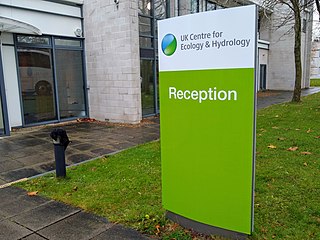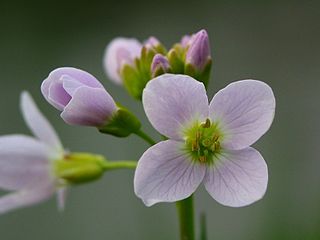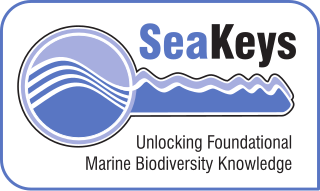Related Research Articles

Biodiversity or biological diversity is the variety and variability of life on Earth. Biodiversity is a measure of variation at the genetic, species, and ecosystem level.

Natural history is a domain of inquiry involving organisms, including animals, fungi, and plants, in their natural environment, leaning more towards observational than experimental methods of study. A person who studies natural history is called a naturalist or natural historian.

A BioBlitz, also written without capitals as bioblitz, is an intense period of biological surveying in an attempt to record all the living species within a designated area. Groups of scientists, naturalists and volunteers conduct an intensive field study over a continuous time period. There is a public component to many BioBlitzes, with the goal of getting the public interested in biodiversity. To encourage more public participation, these BioBlitzes are often held in urban parks or nature reserves close to cities. Research into the best practices for a successful BioBlitz has found that collaboration with local natural history museums can improve public participation. As well, BioBlitzes have been shown to be a successful tool in teaching post-secondary students about biodiversity.
The Biological Records Centre (BRC) established in 1964, is a national focus in the UK for terrestrial and fresh water species recording.
The biodiversity of Great Britain and Ireland is one of the most well-studied geographical areas of its size in the world. This biota work has resulted in the publication of distribution atlases for many taxonomic groups. This page lists these publications.

Ethnobiology is the scientific study of the way living things are treated or used by different human cultures. It studies the dynamic relationships between people, biota, and environments, from the distant past to the immediate present.

The UK Centre for Ecology & Hydrology (UKCEH) is a centre for excellence in environmental science across water, land and air. The organisation has a long history of investigating, monitoring and modelling environmental change, and its science makes a difference in the world. The issues that its science addresses include: air pollution, biodiversity, chemical risks in the environment, extreme weather events, droughts, floods, greenhouse gas emissions, soil health, sustainable agriculture, sustainable ecosystems, water quality, and water resources management.
Soil ecology is the study of the interactions among soil organisms, and between biotic and abiotic aspects of the soil environment. It is particularly concerned with the cycling of nutrients, formation and stabilization of the pore structure, the spread and vitality of pathogens, and the biodiversity of this rich biological community.
Biodiversity informatics is the application of informatics techniques to biodiversity information, such as taxonomy, biogeography or ecology. Modern computer techniques can yield new ways to view and analyze existing information, as well as predict future situations. Biodiversity informatics is a term that was only coined around 1992 but with rapidly increasing data sets has become useful in numerous studies and applications, such as the construction of taxonomic databases or geographic information systems. Biodiversity informatics contrasts with "bioinformatics", which is often used synonymously with the computerized handling of data in the specialized area of molecular biology.
The National Biodiversity Network (UK) (NBN) is a collaborative venture set up in 2000 in the United Kingdom committed to making biodiversity information available through various media, including on the internet via the NBN Atlas—the data search website of the NBN.

rECOrd is a Local Biological Records Centre (LRC) serving Cheshire, Halton, Warrington and Wirral - 'The Cheshire region'. It provides a local facility for the storage, validation and usage of Cheshire-based biological data under the National Biodiversity Network (NBN) project. It is one of a number of local Biological Records Centres across Britain which together aim to give complete geographic coverage of the UK.

The natural environment, commonly referred to simply as the environment, includes all living and non-living things occurring naturally on Earth.
iNaturalist is a social network of naturalists, citizen scientists, and biologists built on the concept of mapping and sharing observations of biodiversity across the globe. iNaturalist may be accessed via its website or from its mobile applications. As of 21 September 2022, iNaturalist users had contributed approximately 115,651,000 observations of plants, animals, fungi, and other organisms worldwide, and around 245,700 users were active in the previous 30 days.
Greenspace Information for Greater London (GiGL) is the environmental record centre for Greater London. It collates information about wildlife, parks, nature reserves, gardens and other open spaces, and makes it available to partner organisations and environmental consultants through its website. Public access to the website is restricted to information not considered sensitive. GiGL works with over 50 partner organisations in London.

iSpot is a website developed and hosted by the Open University with funding from the Open Air Laboratories (OPAL) network with an online community intended to connect nature enthusiasts of all levels.
Franklyn Hugh Perring PhD, OBE was a British naturalist, regarded as "one of the most influential botanists and nature conservationists of the 20th century".
The South African National Biodiversity Institute (SANBI) is an organisation established in 2004 in terms of the National Environmental Management: Biodiversity Act, No 10 of 2004, under the South African Department of Environmental Affairs, tasked with research and dissemination of information on biodiversity, and legally mandated to contribute to the management of the country’s biodiversity resources.
Machynys Ponds is a Site of Special Scientific Interest (SSSI) in Carmarthenshire, Wales, designated in 1993 for its botanical features.

SeaKeys is a large collaborative marine biodiversity project funded through the Foundational Biodiversity Information Program in South Africa. The purpose of the project is to collect and distribute genetic, species and ecosystem information relating to marine biodiversity in southern Africa, which may be used to support informed decision-making about the marine environment.
The Biodiversity of South Africa is the variety of living organisms within the boundaries of South Africa and its exclusive economic zone. South Africa is a region of high biodiversity in the terrestrial and marine realms. The country is ranked sixth out of the world's seventeen megadiverse countries, and is rated among the top 10 for plant species diversity and third for marine endemism.
References
- 1 2 3 Burnett, J., Copp, C., Harding, P. (1995) Biological Recording in the United Kingdom Present practice and future development Summary Report, Coordinating Commission for Biological Recording available for download from Natural Environment Research Council
- ↑ "Biological Records". Archived from the original on 2016-03-04. Retrieved 2015-02-28.
- ↑ biological recording schemes at BRC
- ↑ Roy, D B; Harding, P T; Preston, C D; Roy, H E. "Celebrating 50 years of the Biological Records Centre" (PDF). Biological Records Centre on Internet Archive. Centre for Ecology and Hydrology. Retrieved 3 January 2023.
- ↑ National Biodiversity Network
- ↑ NBN Gateway
- ↑ Essex Field Club
- ↑ Sandwell Valley Naturalists' Club
- ↑ Association of Local Environmental Records Centres